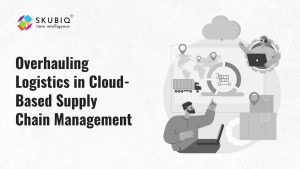In the dynamic landscape of modern business, inventory management strategies play a pivotal role in the success of a company’s supply chain. As businesses expand globally and customer expectations continue to rise, the need for efficient and effective inventory management systems becomes increasingly crucial. In this article, we will explore the advantages of implementing multi-location inventory management strategies and how they contribute to optimizing your supply chain.
The Foundation: Understanding Inventory Management
Before delving into the benefits of multi-location strategies, it’s essential to comprehend the basics of inventory management. At its core, inventory management involves overseeing the flow of goods from the manufacturer to the warehouse and eventually to the customer. Efficient management ensures that products are available when needed, minimizing excess stock and preventing stockouts.
The Evolution of Inventory Management Systems
Traditionally, businesses relied on manual methods to track inventory, leading to inaccuracies, delays, and increased operational costs. However, with the advent of technology, inventory management systems have evolved, offering a more streamlined and automated approach. Today, businesses can leverage advanced software solutions that provide real-time visibility into their inventory across various locations.
The Role of Multi-Location Inventory Management Strategies
1. Inventory Management Software
Investing in advanced inventory management software is a fundamental step in enhancing operational efficiency. Such software allows businesses to centralize control over their multi-location inventory, providing a comprehensive view of stock levels, order status, and trends. Automated alerts and notifications help in proactive decision-making, minimizing the risk of errors and delays.
The integration of inventory management software with other business systems, such as the order management system, further streamlines processes. This synergy ensures that orders are processed seamlessly, and inventory levels are adjusted in real-time, reducing the chances of overcommitting or overselling.
2. Third-Party Logistics (3PL) Integration
One key aspect of optimizing inventory management is the integration of third-party logistics providers. Collaborating with 3PL partners enables businesses to expand their reach without the burden of managing additional warehouses. This approach is particularly beneficial for companies experiencing seasonal fluctuations or those looking to enter new markets.
By strategically placing inventory in various 3PL warehouses, businesses can reduce shipping costs and delivery times. The real-time connectivity between the company’s system and the 3PL provider ensures accurate and up-to-date information on inventory levels, preventing overstock or stockouts.
3. Streamlining Warehouse Operations
Efficient warehouse operations are critical to successful multi-location inventory management. The layout, organization, and automation of warehouses significantly impact the speed and accuracy of order fulfillment. Implementing technologies like RFID (Radio-Frequency Identification) and barcode scanning enhances visibility and minimizes errors in picking and packing processes.
Moreover, the adoption of robotics and automation in warehouses can further improve efficiency. Automated guided vehicles (AGVs) and robotic arms can handle repetitive tasks, allowing human resources to focus on more complex responsibilities. This not only accelerates order processing but also reduces the risk of errors in the supply chain.
Advantages of Multi-Location Inventory Management Strategies
1. Reduced Shipping Costs
Strategically placing inventory in multiple locations enables businesses to fulfill orders from the nearest warehouse. This not only reduces shipping distances but also minimizes shipping costs. By optimizing the supply chain in this manner, companies can pass on these cost savings to customers or invest them in other areas of the business.
2. Enhanced Customer Satisfaction
In today’s fast-paced world, customers expect swift and accurate deliveries. Multi-location inventory management ensures that products are available closer to the end consumer, resulting in faster shipping times. This leads to increased customer satisfaction, repeat business, and positive reviews, all of which are crucial in building a loyal customer base.
3. Improved Risk Management
Diversifying inventory across multiple locations acts as a risk mitigation strategy. Natural disasters, geopolitical events, or other unforeseen disruptions in one region may not have a catastrophic impact on the entire supply chain. This resilience ensures business continuity and minimizes the risk of prolonged disruptions.
4. Optimized Order Fulfillment
With real-time visibility into inventory levels across all locations, businesses can optimize order fulfillment. Intelligent algorithms can allocate orders to the warehouse with the most readily available stock, reducing fulfillment times and preventing stockouts. This dynamic approach to order fulfillment is crucial for maintaining a competitive edge in today’s market.
Conclusion
In conclusion, optimizing your supply chain with multi-location inventory management strategies is a proactive approach to the challenges of modern business. The integration of inventory management systems, collaboration with third-party logistics providers, and the use of advanced inventory management software contribute to streamlined operations and increased customer satisfaction. By strategically distributing inventory, businesses can minimize costs, enhance risk management, and ultimately gain a competitive advantage in today’s global marketplace. Investing in these strategies is not just about managing inventory; it’s about transforming the supply chain into a dynamic and responsive network that adapts to the ever-changing demands of the market.




